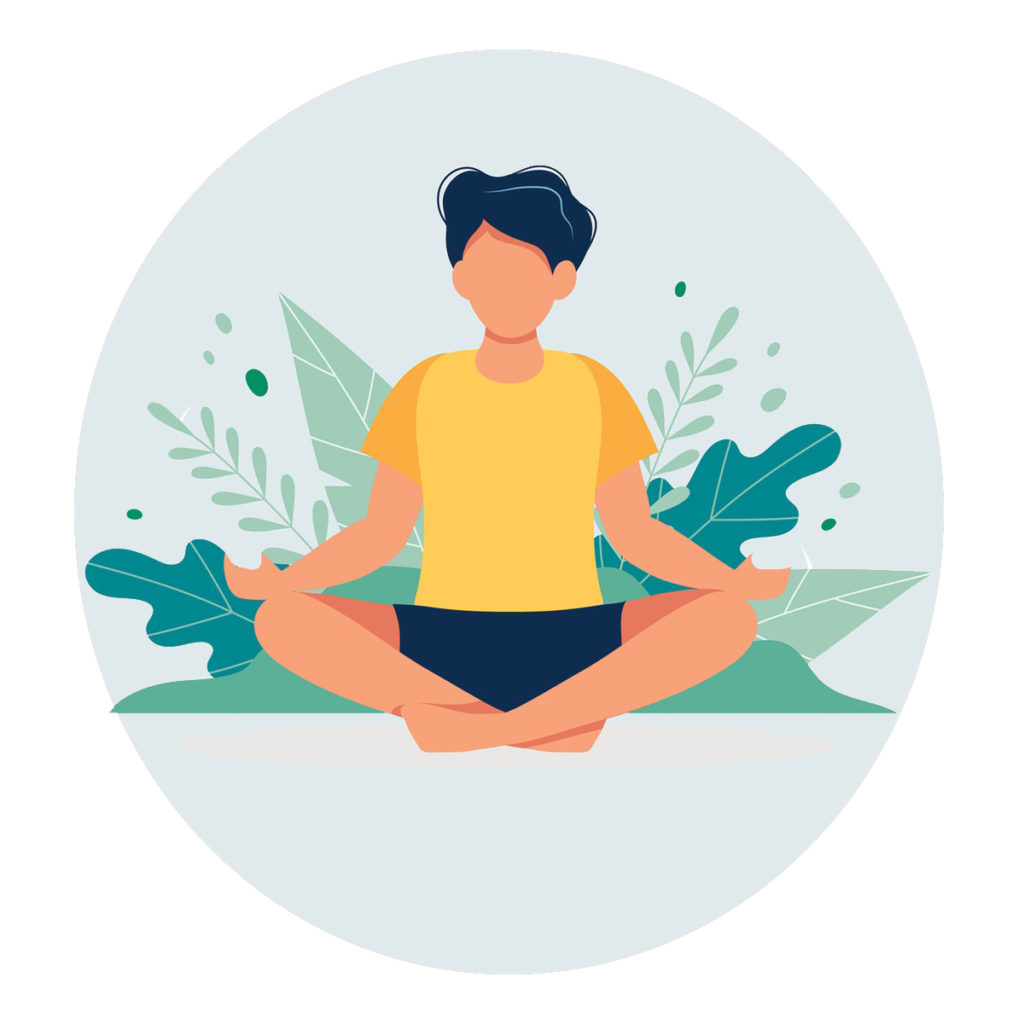
To practice gratitude, the first step is to be grateful. Next, you can focus on feeling grateful. Notice how your body and thoughts feel. You can then let go judgments and focus on what is happening right now. This can help to recognize that gratitude is a natural state for happiness. You can practice gratitude in many different ways. You can also write a letter of thanks to someone or give them a mental wish.
Next, find something small to be grateful for. Even if your mindfulness is not an automatic trait, it will help you increase your resilience as well as your well-being. Follow the Elaine Smookler's advice to get started. You can practice gratitude by focusing on your breathing. This is a powerful tool to bring your attention to the present moment in a world where busy minds are easily drawn to busyness. Next, pay attention to your body sensations and focus your attention on the object you are grateful for.

Many meditations can be used to increase gratitude. They all offer similar benefits. Begin a gratitude meditation by lying down, closing your eyes. Even creativity is possible. You can be creative, no matter which method you use. Another option is to prepare your bedroom, close your eyes and think about all the things that you are grateful for. You will eventually learn how to practice gratitude by repeating the words "thanks" to yourself.
A guided video is another way to meditate on gratitude. Guided videos will guide you through the steps of practicing gratitude. This video is about ten minutes long, and it is suitable for absolute beginners. You can download the video from the bottom of this page. After the meditation has been completed, you will be able to experience your gratitude. This practice will help to develop compassion, empathy, and an appreciation for all the positive things in your daily life.
There are many benefits of practicing gratitude. It can help you feel happier and more optimistic. You will feel happier about yourself and develop gratitude for the things in your life. Practicing gratitude will help you be more grateful for everything. It can be practiced at any time you wish, so you don't have to wait for a specific time. One of the benefits of practicing gratitude meditation is that it can be practiced regularly and will improve your self-esteem.

Writing gratitude down is a powerful way to cultivate gratitude. Writing down your gratitude can help you communicate your feelings better, which will lead to a happier, more fulfilled life. And it's not just the expression of gratitude that helps you feel more content, but the sharing of this feeling will also benefit others. Expressing gratitude can make a big difference in your relationships. If you are able recognize and express gratitude to others, you will find your life more satisfying and be able refocus on what really matters to you.
FAQ
How do I count calories?
It is possible to wonder "What diet is best for me?" or "is counting calories necessary?" The answer is dependent on several factors like your current health status, personal goals, your lifestyle, and your preferences.
The Best Diet for Me - Which One is Right For You?
My current health, my personal goals and lifestyle will determine the best diet for me. There are many diets out there, some good and some bad. Some work well for certain people while others don't. What should I do? How do I make the right decision?
This article aims at answering these questions. The article starts by introducing the many types of diets currently available. The pros and cons of each diet are then discussed. We'll then discuss how to choose which one is best for you.
Let's first take a look at different diets.
Diet Types
There are three main types, low fat, high protein, or ketogenic diets. Let's discuss them briefly below.
Low Fat Diets
A low fat diet means a diet that reduces the intake of fats. This is done through reducing the intake of saturated fats (butter, cream cheese, etc.) You can replace them with unsaturated oils (olive oil and avocados) Low fat diets are often recommended to those who wish to lose weight quickly. This diet can cause constipation, heartburn, and stomach problems. A person may also experience vitamin deficiencies if they don't get enough vitamins.
High Protein Diets
High protein diets restrict carbohydrates in favor of proteins. These diets are more protein-rich than others. These diets are designed to build muscle mass and help you burn more calories. They may not be able to provide sufficient nutrition for people who need it. They are not suitable for all people because they can be restrictive.
Ketogenic Diets
Ketogenic diets also go by the name keto diets. They are high fat and moderately carbohydrate and protein-rich. Athletes and bodybuilders use them because they allow them more time and harder training without feeling fatigued. But, they require strict adherence to avoid negative side effects like nausea, headaches, and fatigue.
How can my blood pressure be controlled?
Find out the causes of high blood pressure first. Next, you must determine the cause and take steps to decrease it. This could mean eating less salt, losing some weight, taking medication, and so on.
It is important to ensure that you get enough exercise. Walking is a great alternative if you don't have the time or energy to exercise regularly.
Consider joining a gym if your current exercise regimen is not satisfying you. You will probably join a gym where you can meet other people with similar goals. It's easier for you to exercise if you know that someone will be watching you at the club.
How can you live a healthy life?
Healthy living means eating right, exercising regularly and getting enough sleep. It also involves managing stress and having fun. You should avoid processed foods, sugar, or unhealthy fats. Exercise burns calories and strengthens the muscles. You can improve your memory and concentration by getting enough sleep. Stress management can reduce anxiety and depression. Fun is the key to keeping us healthy and happy.
Statistics
- WHO recommends consuming less than 5% of total energy intake for additional health benefits. (who.int)
- According to the Physical Activity Guidelines for Americans, we should strive for at least 150 minutes of moderate intensity activity each week (54Trusted Source Smoking, harmful use of drugs, and alcohol abuse can all seriously negatively affect your health. (healthline.com)
- The Dietary Guidelines for Americans recommend keeping added sugar intake below 10% of your daily calorie intake, while the World Health Organization recommends slashing added sugars to 5% or less of your daily calories for optimal health (59Trusted (healthline.com)
- WHO recommends reducing saturated fats to less than 10% of total energy intake; reducing trans-fats to less than 1% of total energy intake; and replacing both saturated fats and trans-fats to unsaturated fats. (who.int)
External Links
How To
What does the term "vitamins" mean?
Vitamins are organic substances found naturally in food. Vitamins aid us in absorbing nutrients from the food we eat. Vitamins cannot be produced by the body. They must be acquired from food.
There are two types vitamins: water soluble or fat soluble. Water soluble vitamins dissolve easily in water. You can find vitamin C,B1 or thiamine, B2 or riboflavin and B3 or niacin, B3/niacin, B6/pyridoxine, folic Acid, biotin and pantothenic Acid as examples. Fat-soluble vitamins can be stored in the liver or in fatty tissue. These include vitamin D, E and K, as well as beta carotene.
Vitamins are classified according their biological activity. There are eight major groups of vitamins:
-
A – Essential for normal growth, and the maintenance of good health.
-
C - vital for proper nerve function, and energy production.
-
D - essential for healthy bones, teeth, and gums.
-
E - needed for good vision and reproduction.
-
K – Required for healthy nerves & muscles.
-
P - Vital for strong bones and teeth.
-
Q - aids digestion, absorption and absorption iron
-
R - Required for red blood cell production
The recommended daily allowance of vitamins (RDA), varies according to age, gender, physical condition, and other factors. The U.S. Food and Drug Administration sets RDA values.
For adults aged 19 and older, the RDA for vitamin B is 400 micrograms daily. However, pregnant women need 600 micrograms per day because it is important for fetal development. Children ages 1-8 require 900 micrograms per day. Infants under one year of age require 700 micrograms per day, but this amount decreases to 500 micrograms per day between 9 months and 12 months of age.
Children aged 1-18 years need 800 micrograms daily, while children overweight require 1000 micrograms per days. Children who are severely obese or underweight will need 1200 micrograms each day.
Children 4-8 years old who have anemia must consume 2200 micrograms of Vitamin C daily.
Adults over 50 years of age need 2000 micrograms per day for general health. Because of their higher nutrient needs, women who are pregnant or nursing need 3000 mg per day.
1500 micrograms is the recommended daily intake for adults aged 70+, who lose approximately 10% of muscle each year.
Women who are pregnant, nursing or breastfeeding need more than the RDA. Pregnant women need 4000 micrograms per dayduring pregnancy and 2500 micrograms per day after delivery. Breastfeeding moms need 5000 micrograms each day when breastmilk production occurs.